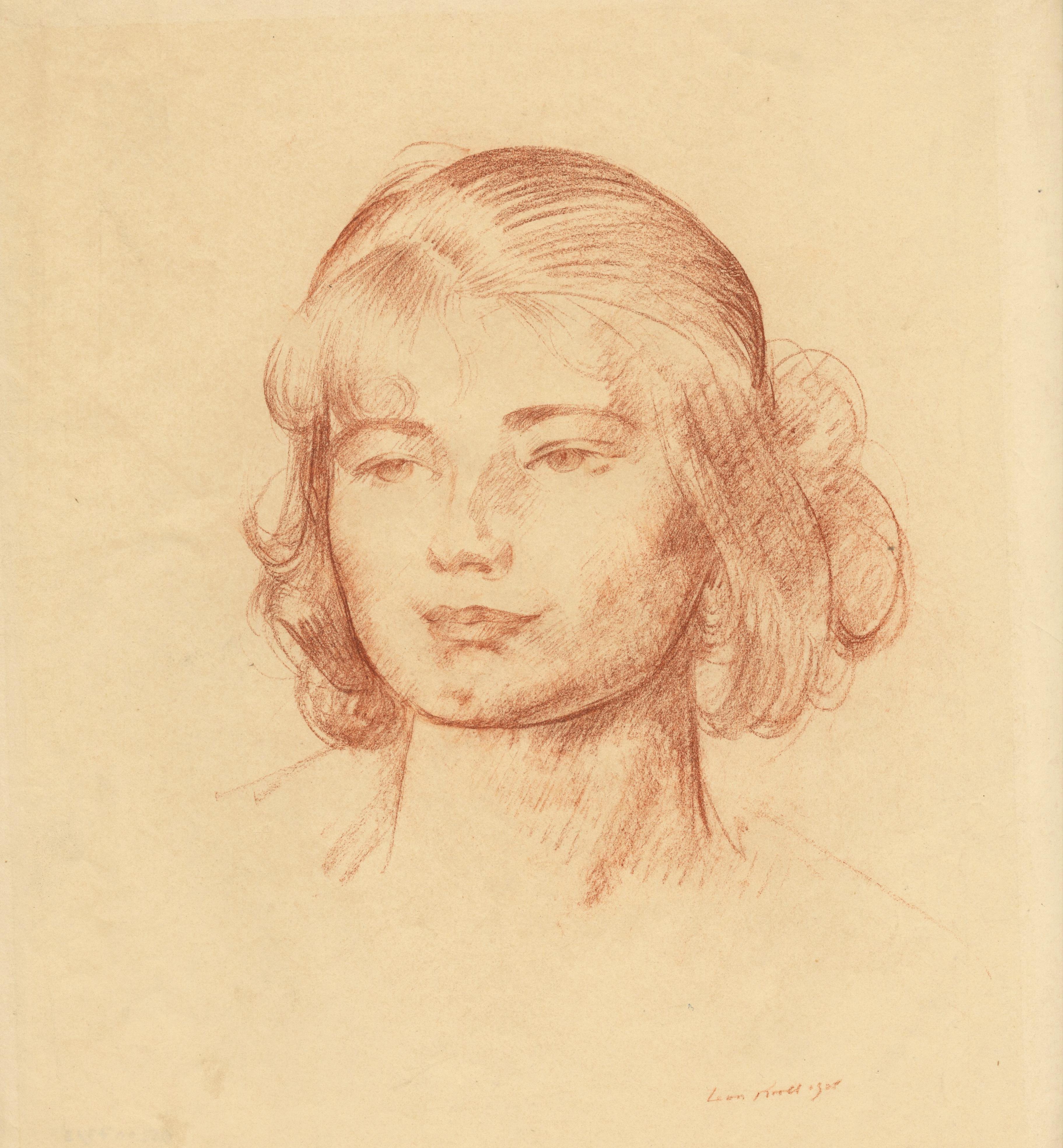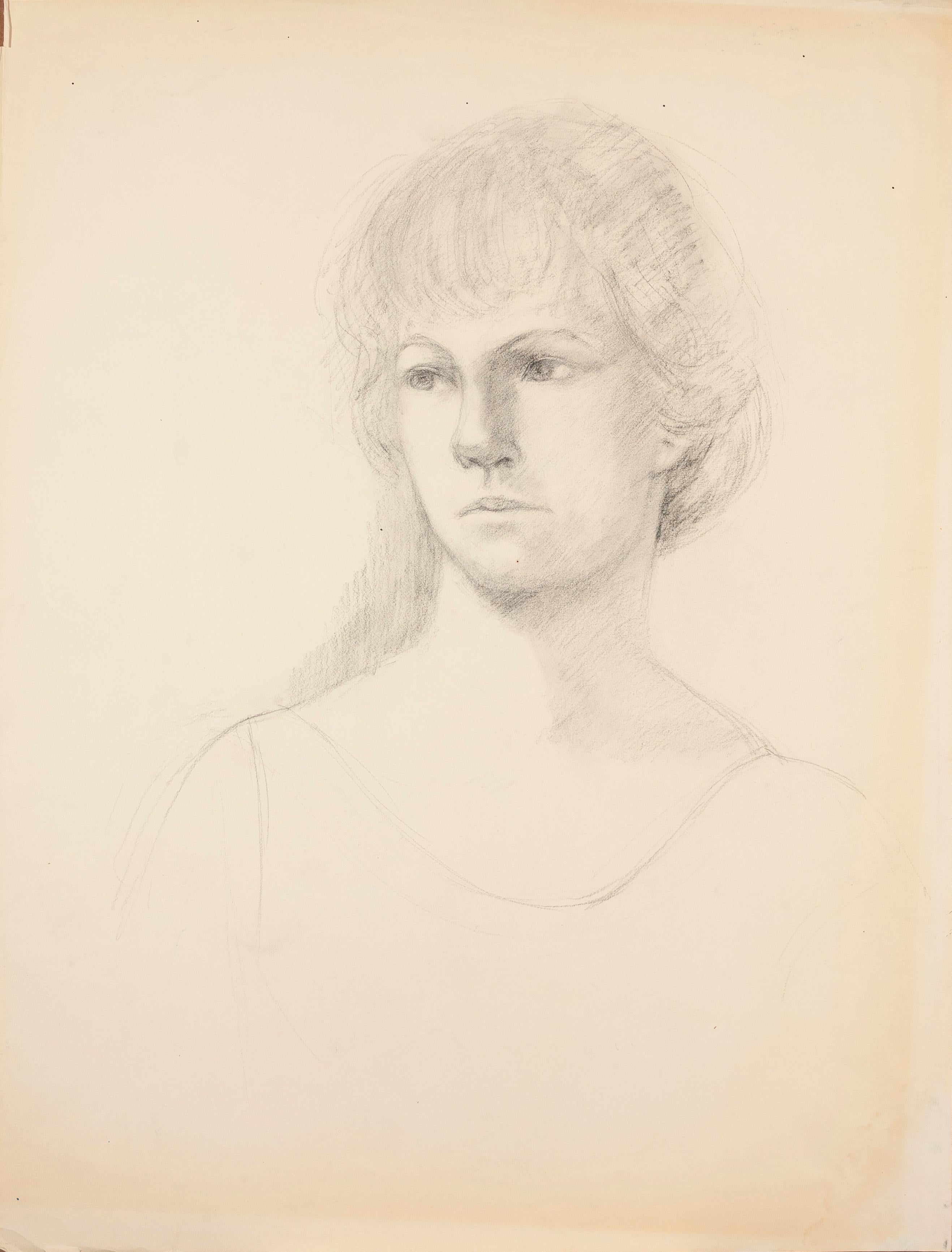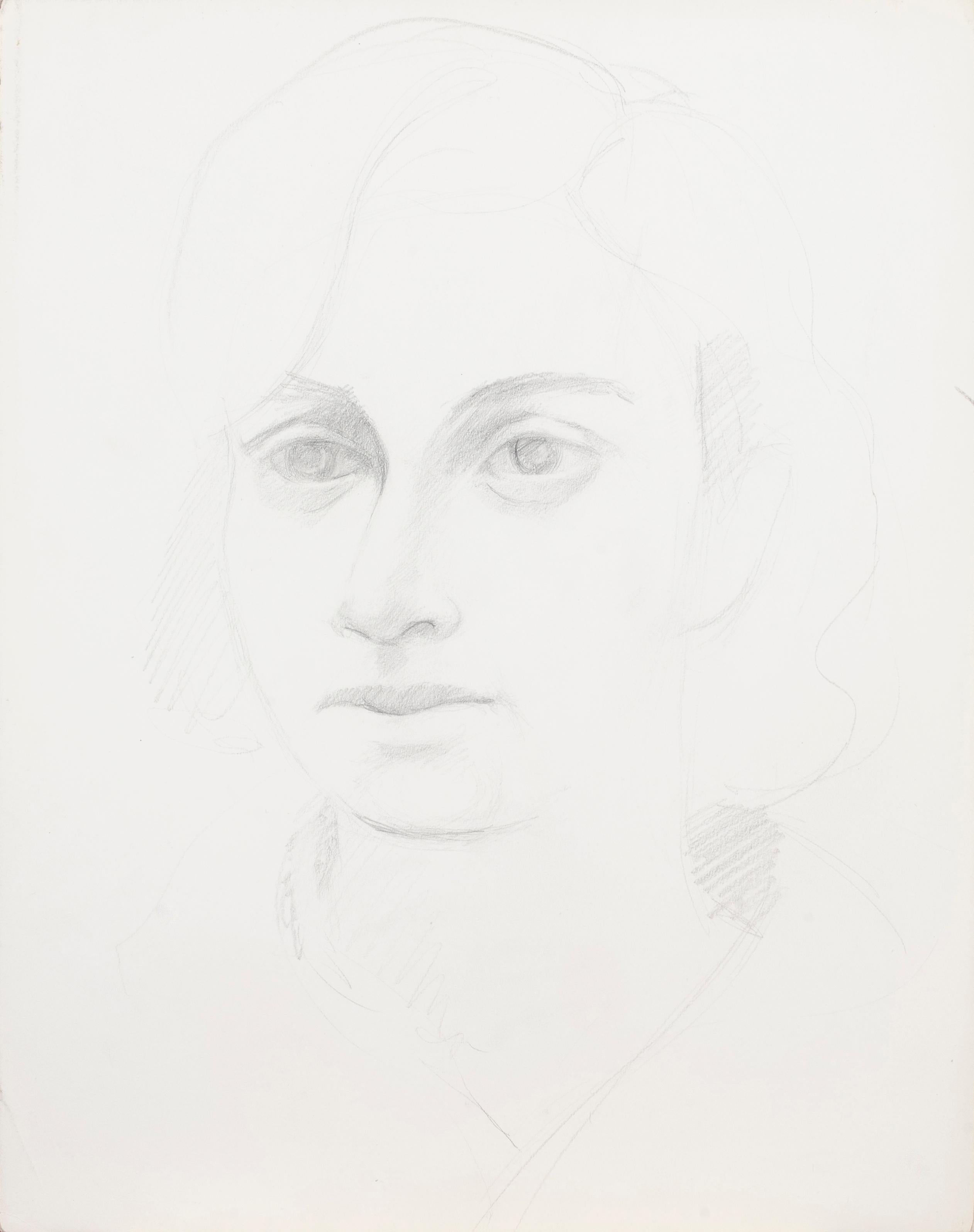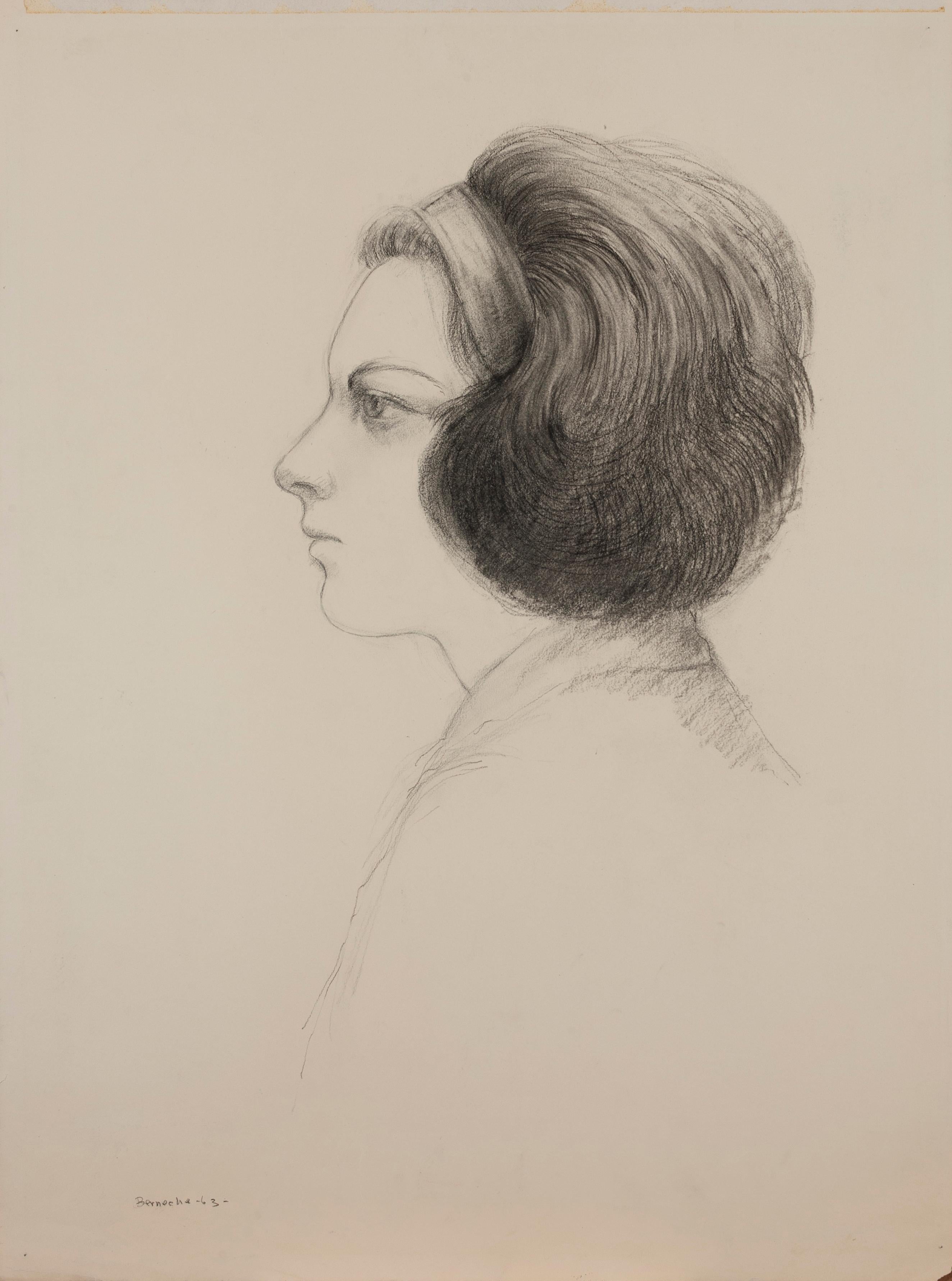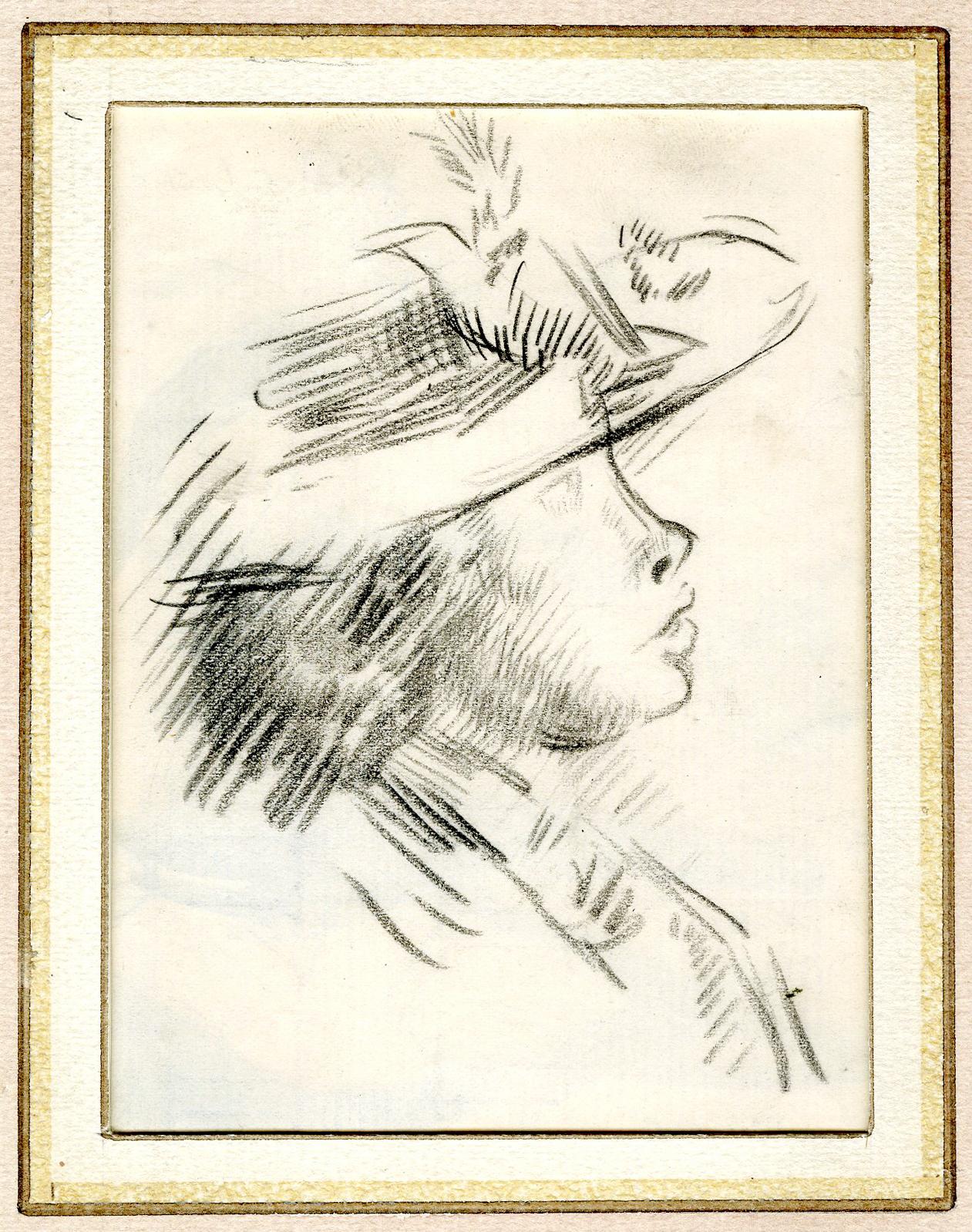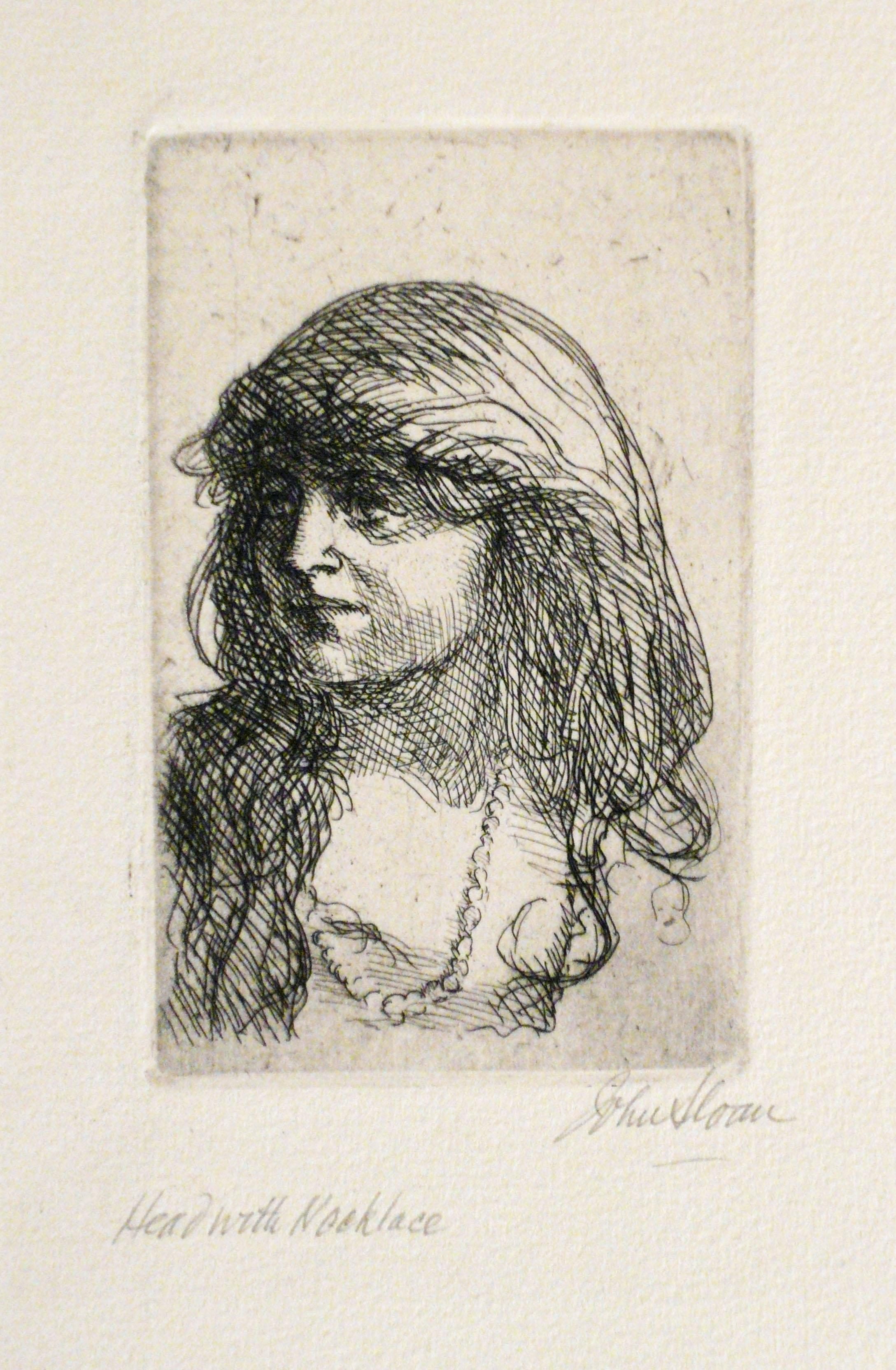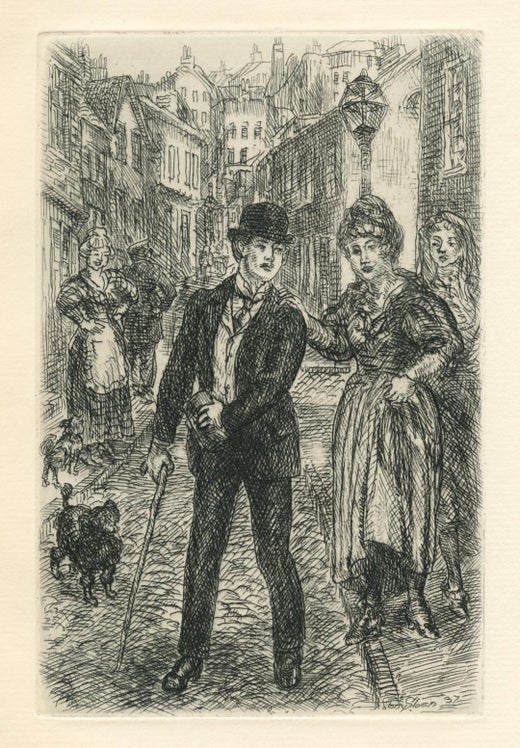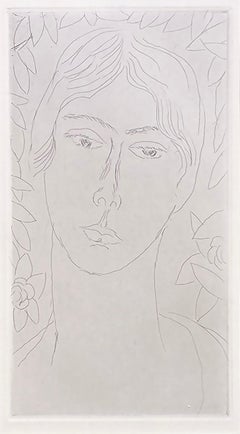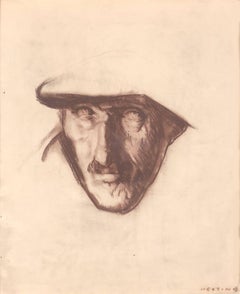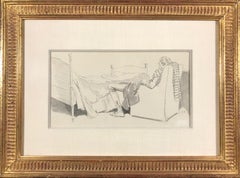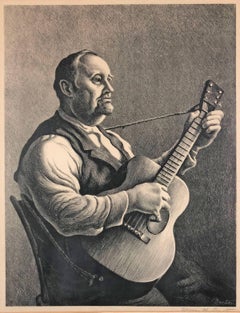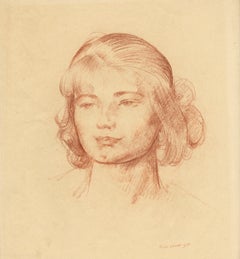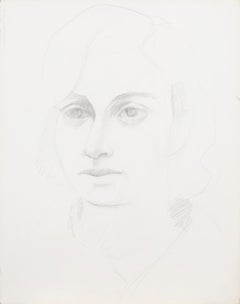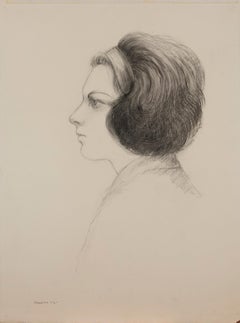Want more images or videos?
Request additional images or videos from the seller
1 of 4
John SloanHead Study, 19301930
1930
Price Upon Request
Price Upon Request
Price Upon Request
Price Upon Request
Price Upon Request
Price Upon Request
Price Upon Request
Price Upon Request
Price Upon Request
Price Upon Request
Shipping
Retrieving quote...The 1stDibs Promise:
Authenticity Guarantee,
Money-Back Guarantee,
24-Hour Cancellation
About the Item
Head Study, 1930
John Sloan (1871-1951)
Signed Lower Right
10.5" x 9" Unframed
19" x 16.5" Framed
Born in Lock Haven, Pennsylvania, John Sloan became one of the major early 20th- century figures in New York, pioneering the Social Realist movement with Robert Henri and his circle. He was also an illustrator and early eastern painter in the Southwest.
Sloan moved with his family to Philadelphia where he attended Central High School and became a close friend of William Glackens. He worked for a print dealer and as illustrator for the Philadelphia Inquirer and the Philadelphia Press. He also studied at the Pennsylvania Academy with Thomas Anshutz and met Robert Henri.
In 1904, he moved to New York and while continuing as an illustrator, became a part of Henri's circle of urban realists. He was an avid walker who continually strolled the streets for subject matter, especially exploring Greenwich Village and the Lower East Side. His work with great humanitarian bent flourished especially during this time because he was so committed emotionally to his subject matter.
He joined the Socialist Party in 1910 and espoused utopian ideas of equality but was never a political activist. However, from 1912 to 1916, he was art editor of the party's monthly periodical The Masses, and his skillful illustrations elevated the quality of the publication. The realities of World War I caused him, like so many, to become disenchanted with hard-line socialism.
He taught at the Art Students League, and his students included Reginald Marsh, Raphael Soyer, and Alexander Calder.
Opposing the traditional hold that the National Academy had over the art world in America, he exhibited as one of "The Eight" in 1908 at the Macbeth Gallery. In 1913, he was much affected by the Armory Show exhibition of modernist painting, particularly the Post-Impressionist, Fauve, and Cubist works and after that year became experimenting with more radical painting styles. He was also an avid etcher.
Influenced by his friend Henri, who had spent summers of 1916 and 1917 in New Mexico, Sloan and his wife Dolly first visited Santa Fe in 1919. From that time, he made several painting trips to the Southwest and was active in the Santa Fe colony and in getting other eastern artists to head West. Unlike many of his contemporaries there, he refused to paint romanticized views of the Mexican and Indian culture. He served as President of the Exposition of Indian Tribal Arts in the 1930s and lobbied the Society of Independent Artists to include work by Native Americans in their exhibitions.
In 1944, Sloan married Helen Farr, who had been one of his students, and after her husband's death in 1951, she devoted herself to turning his estate into a philanthropic instrument. The largest benefactor was the Delaware Art Museum, which received more than 5000 works including painting representing every phase of his career and his archival papers. With these acquisitions, the Museum became the leading repository for the study of Sloan. In honor of the ongoing support by Helen Farr Sloan, museum representatives named its library the Helen Farr Sloan Library.
- Creator:John Sloan (1832-1932, American)
- Creation Year:1930
- Dimensions:Height: 10.5 in (26.67 cm)Width: 9 in (22.86 cm)
- Medium:
- Movement & Style:
- Period:
- Condition:
- Gallery Location:Missouri, MO
- Reference Number:1stDibs: LU747310870882
John Sloan
John Sloancame to New York in 1904 and worked for some time as a freelance illustrator. With Robert Henri, he organized an exhibition of a group of urban realist painters, known as "The Eight" or the "Ashcan School," who challenged traditional notions of art. Having moved to the Village in 1912, Sloan lived with his wife Dolly at 240 West 4th Street and at 88 Washington Place.
About the Seller
5.0
Vetted Professional Seller
Every seller passes strict standards for authenticity and reliability
Established in 1970
1stDibs seller since 2017
155 sales on 1stDibs
Typical response time: 1 to 2 days
- ShippingRetrieving quote...Shipping from: Missouri, MO
- Return Policy
Authenticity Guarantee
In the unlikely event there’s an issue with an item’s authenticity, contact us within 1 year for a full refund. DetailsMoney-Back Guarantee
If your item is not as described, is damaged in transit, or does not arrive, contact us within 7 days for a full refund. Details24-Hour Cancellation
You have a 24-hour grace period in which to reconsider your purchase, with no questions asked.Vetted Professional Sellers
Our world-class sellers must adhere to strict standards for service and quality, maintaining the integrity of our listings.Price-Match Guarantee
If you find that a seller listed the same item for a lower price elsewhere, we’ll match it.Trusted Global Delivery
Our best-in-class carrier network provides specialized shipping options worldwide, including custom delivery.More From This Seller
View All"Mlle Landsberg" (grade planche, pl. 16)
By Henri Matisse
Located in Missouri, MO
"Mlle Landsberg" (grade planche, pl. 16), 1914
Henri Matisse (French, 1869-1954)
Signed and Numbered Lower Right
Edition 12/15
Image size: 7 7/8 x 4 5/16 inches
Sheet size: 17 11/16 x 12 1/2 inches
With frame: 19 1/2 x 14 1/2 inches
Henri Matisse came from a family who were of Flemish origin and lived near the Belgian border. At eight o'clock on the evening of December 31, 1869, he was born in his grandparents' home in the town of Le Cateau in the cheerless far north of France. His father was a self-made seed merchant who was a mixture of determination and tightly coiled tension.
Henri had no clear idea of what he wanted to do with his life. He was a twenty-year-old law clerk convalescing from appendicitis when he first began to paint, using a box of colors given to him by his mother. Little more than a year later, in 1890, he had abandoned law and was studying art in Paris. The classes consisted of drawing from plaster casts and nude models and of copying paintings in the Louvre. He soon rebelled against the school's conservative atmosphere; he replaced the dark tones of his earliest works with brighter colors that reflected his awareness of Impressionism. Matisse was also a violinist; he took an odd pride in the notion that if his painting eye failed, he could support his family by fiddling on the streets of Paris.
Henri found a girlfriend while studying art, and he fathered a daughter, Marguerite, by her in 1894. In 1898 he married another woman, Amelie Parayre. She adopted the beloved Marguerite; they eventually had two sons, Jean, a sculptor and Pierre who became an eminent art dealer. Relations between Matisse and his wife were often strained. He often dallied with other women, and they finally separated in 1939 over a model who had been hired as a companion for Mme. Matisse. She was Madame Lydia, and after Mme. Matisse left, she remained with Matisse until he died.
Matisse spent the summer of 1905 working with Andre Derain in the small Mediterranean seaport of Collioure. They began using bright and dissonant colors. When they and their colleagues exhibited together, they caused a sensation. The critics and the public considered their paintings to be so crude and so roughly crafted that the group became known as Les Fauves (the wild beasts).
By 1907, Matisse moved on from the concerns of Fauvism and turned his attention to studies of the human figure. He had begun to sculpt a few years earlier. In 1910, when he saw an exhibition of Islamic art, he was fascinated with the multiple patterned areas and adapted the decorative universe of the miniatures to his interiors. As a continuation of his interest in the "exotic", Matisse made extended trips to Morocco in 1912 and 1913.
At the end of 1917, Matisse moved to Nice; he would spend part of each year there for the remainder of his life. A meticulous dandy, he wore a light tweed jacket amd a tie when he painted. He never used a palette, but instead squeezed his colors on to plain white kitchen dishes...
Category
1910s Fauvist Figurative Prints
Materials
Drypoint, Etching
Price Upon Request
Self-Portrait
By Sean Keating
Located in Missouri, MO
Sean Keating (Irish 1889-1977)
"Self Portrait" c. 1950s
Charcoal on Paper
Signed Lower Right
Framed Size: approx 20 x 16 inches
A noted portrait and figure painter, influenced by both Romanticism and Realism, Sean Keating was an Irish nationalist painter who executed several iconic images of the Irish Civil war era, and of the ensuing period of industrialization. One of the great exemplars of representational painting in Ireland, Keating was an intellectual artist in that he set out to depict the birth and development of the Republic of Ireland, and his pictures are deliberately idealized even heroic. However, he held very conservative views about art - verging on the academic style - and was a committed defender of traditional Irish painting, considering much modern art to be bogus.
Born in Limerick, Sean Keating studied drawing at the Limerick Technical School before winning a scholarship, arranged for him by William Orpen, to study fine art painting at the Metropolitan School of Art in Dublin. In 1914 he won the Taylor Scholarship and the following year exhibited three paintings at the Royal Hibernian Academy.
Over the next period of years he spent time on the Aran Islands off County Galway, and then in London. He returned to Ireland in 1916 and painted the war of independence and the subsequent civil war. Works he completed at this time include the painting: Men of the South (1921) depicting a group of IRA men about to stage a military ambush, and An Allegory (c. 1922) which features a cluster of figures representing the fractures in the young Irish state.
Meantime, in 1919, Keating was appointed an assistant teacher at the Dublin Metropolitan School of Art. Then in 1921, he staged his first one-man show at The Hall, Leinster Street. In 1923, he was elected to the Royal Hibernian Academy.
In a Dublin exhibition of Irish art held in 1924, Keating was awarded the gold medal for his picture Homage to Hugh Lane - now hanging in the Hugh Lane Gallery. In the late 1920s, Keating was commissioned to record the building of the hydro-electric power generator at Ardnacrusha, near Limerick. He painted a number of paintings of this scheme. Not unlike the Soviet Realism School of painting, these paintings sought to promote the construction work as an achievement of heroic proportions.
Keating's works began to attract interest abroad. He exhibited at the Royal Academy in London and, in 1930, he held a one-man show at the Hackett Gallery, New York. In 1931 Keating's one-person exhibition was staged at the Victor Waddington Galleries, Dublin. In 1934 he was made professor of the National College of Art in Dublin, and Professor of Painting, three years later. His 1937 exhibition at the Victor Waddington Galleries attracted considerable interest. In 1939, he was asked to paint a wall-painting for the Irish pavilion at the New York World Fair and duly created a huge mural of fifty-four panels. He was President of the Royal Hibernian Academy from 1949 to 1962, exhibiting nearly 300 works during the period. In 1963, a retrospective exhibition was staged at the Municipal Gallery of Modern Art, which was opened by Irish President de Valera...
Category
1950s Realist Figurative Drawings and Watercolors
Materials
Charcoal, Archival Paper
Price Upon Request
Gentleman Napping in a Chair (Possibly for Ichabod Crane or other Illustration)
By Everett Shinn
Located in Missouri, MO
Everett Shinn
"Gentleman Napping in a Chair" (Illustration)
Pen and Ink on Paper
Initialed "E.S." Lower Right
Displaying an early aptitude for drawing, coupled with a strong interes...
Category
Early 20th Century American Realist Figurative Drawings and Watercolors
Materials
Paper, Ink, Pen
The Hymn Singer
By Thomas Hart Benton
Located in Missouri, MO
Signed in Pencil Lower Right
Ed. 500
Circulated by Twayne Publishers, New York City
Image Size: 16 x 12 3/8
Framed Size: 24 1/4 x 20 1/2 inches
The legendary actor actor and musici...
Category
1950s American Realist Portrait Prints
Materials
Lithograph
Price Upon Request
In the Boudoir
By William Ablett
Located in Missouri, MO
Aquating Engraving
Image Size: Approx 19 x 15.5
Framed Size: Approx. 28.5 x 24.5
William Albert Ablett (1877 - 1937)
Although born to English parents, William Ablett lived in Par...
Category
Early 20th Century Art Deco Figurative Prints
Materials
Engraving, Aquatint
Price Upon Request
Torse de Femme
By Aristide Maillol
Located in Missouri, MO
Aristide Maillol
"Femme de Torse" 1930
Charcoal on Paper
Monogrammed Lower Right
with Photo Certificate of Authenticity
Paper Size: approx 12 x 8 7/8 inches
Framed Size: approx 15.25...
Category
1930s Realist Figurative Drawings and Watercolors
Materials
Charcoal, Archival Paper
Price Upon Request
You May Also Like
Head of a Woman (Margaret)
By Leon Kroll
Located in Fairlawn, OH
Head of a Woman (Margaret)
conte on wove paper, 1925
Signed and dated lower right
Annotated "Margaret" in ink verso
A portrait of Margaret Cassidy Manship ( d. 2012), daughter in law...
Category
1920s Ashcan School Figurative Drawings and Watercolors
Materials
Conté
Study of Model's Head
Located in Columbia, MO
Jerry Berneche (1932 - 2016) was a painter and draftsman of representational scenes and portraits featuring extraordinary color work and extremely detailed mark-making. Locally he is...
Category
20th Century American Realist Figurative Drawings and Watercolors
Materials
Graphite
Head of Woman
Located in Columbia, MO
Jerry Berneche (1932 - 2016) was a painter and draftsman of representational scenes and portraits featuring extraordinary color work and extremely detailed mark-making. Locally he is...
Category
20th Century American Realist Figurative Drawings and Watercolors
Materials
Ink
Value Study of Woman's Head in Profile
Located in Columbia, MO
Jerry Berneche (1932 - 2016) was a painter and draftsman of representational scenes and portraits featuring extraordinary color work and extremely detailed mark-making. Locally he is...
Category
20th Century American Realist Figurative Drawings and Watercolors
Materials
Charcoal, Graphite
Sketch of a woman's head in profile
By Sir William Orpen
Located in Fairlawn, OH
Sketch of a woman's head in profile
Graphite on paper, c. 1900-1910
Unsigned
Condition: Excellent
Tiny tear upper right near hinge (repaired and bearly visible)
Sheet size: 4 5/8 x 3...
Category
1910s Impressionist Figurative Drawings and Watercolors
Materials
Graphite
HEAD WITH NECKLACE
By John Sloan
Located in Portland, ME
Sloan, John. HEAD WITH NECKLACE. Morse 163. Etching, 1913. Edition of 100, of which only 75 were printed. Titled, signed and inscribed "100 proofs" all in pencil, and further signed ...
Category
1910s Portrait Prints
Materials
Etching
More Ways To Browse
Antique Head
Alexander John
John Walker
19 Century American Portraits
Antique Indian Head
Portrait Prints Of Native American Indians
Helen Post
Antique Drawing Instruments
American Indian Village Painting
Robert Marsh
Dolly Paintings
Thomas Anshutz
Leroy Neiman Ink
William Wilkins
Ed Templeton
James Duffy
Dorothy Hepworth
Franco Matania
